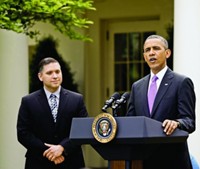Advertisement
Grab your lab coat. Let's get started
Welcome!
Welcome!
Create an account below to get 6 C&EN articles per month, receive newsletters and more - all free.
It seems this is your first time logging in online. Please enter the following information to continue.
As an ACS member you automatically get access to this site. All we need is few more details to create your reading experience.
Not you? Sign in with a different account.
Not you? Sign in with a different account.
ERROR 1
ERROR 1
ERROR 2
ERROR 2
ERROR 2
ERROR 2
ERROR 2
Password and Confirm password must match.
If you have an ACS member number, please enter it here so we can link this account to your membership. (optional)
ERROR 2
ACS values your privacy. By submitting your information, you are gaining access to C&EN and subscribing to our weekly newsletter. We use the information you provide to make your reading experience better, and we will never sell your data to third party members.
People
Hessy Taft
Jewish survivor and longtime ACS member describes how she was once a Nazi poster child
by Lauren K. Wolf
September 8, 2014
| A version of this story appeared in
Volume 92, Issue 36

As a baby, Hessy Taft was a celebrity. A photo taken of her when she was six months old appeared on storefronts and on birthday cards throughout Germany. Framed by a bonnet, her cherubic face even graced the cover of an issue of the family magazine Sonne ins Haus (translation: Sun in the House).
Rather than being proud of little Hessy’s popularity, though, her parents were horrified. Jacob and Pauline Levinsons were Jewish, and Sonne ins Haus was a Nazi propaganda periodical. The Nazis, thinking they’d found a beautiful Aryan baby, had unwittingly glamorized a member of the very race they would later try to eradicate.
Now a part-time chemistry instructor at St. John’s University in New York City, Taft recently gifted a copy of the infamous magazine to Yad Vashem Holocaust Memorial in Israel. The donation set off a media frenzy, thrusting her into the limelight once again, as newspapers and radio programs clamored to hear her unbelievable tale. Not one to be left out, C&EN sat down with Taft too, not only to learn how her baby photo ended up in Nazi hands but also to hear how the longtime American Chemical Society member fell in love with science.
When Pauline Levinsons discovered that her baby girl’s picture was popping up all around Berlin, she immediately ran to the photographer who took the image. Hans Ballin greeted her, and then “he closed the doors, closed the curtains, and took her to a back room,” Taft tells C&EN.
There, he quietly explained that the Ministry of Public Enlightenment & Propaganda had been running a contest to find the perfect Aryan baby. The Nazis asked celebrated photographers across Germany to submit photos for consideration. Ballin had sent in little Hessy’s.
Incredulous, Taft’s mother asked Ballin whether he remembered that her family was Jewish. His reply has become something of a Levinsons family legend: “Yes, but I wanted to allow myself the pleasure of the joke.”
Although Ballin succeeded in secretly ridiculing the Nazis—they never realized they’d been duped—his prank put the Levinsons family in danger at the time.
“I could no longer play in the park,” Taft says. “And I couldn’t go to the zoo, my favorite place.” Instead, the child with the famous face had to stay sequestered indoors. If anyone had recognized her and realized her family was Jewish, Taft contends, she surely wouldn’t be alive today.
By 1936, the Levinsonses gave birth to another child. Shortly thereafter, Jacob, who worked for an import-export firm, was arrested on fraudulent tax charges. After his release, he decided it was no longer safe in Berlin, so he briefly moved his family to Latvia, his home country, before resettling them in Paris in 1938.
A few years later, the Nazis began rounding up Jews in the City of Light, and the Levinsonses fled once more, this time passing through Nice and Lisbon before setting sail for Havana, Cuba. Jacob had secured Cuban visas by bribing a member of the consulate in France.
Taft and her family would spend the next seven years in the Cuban capital, relocating one last time in 1949 when they immigrated to the U.S. By then, she was a teenager and it was time to attend high school.
“Now here’s where I first encountered some science,” Taft recalls. Her school in Cuba, she says, was geared toward the humanities. “Other than some rudimentary anatomical biology, there was no science at all” taught to children at St. George’s School in Havana, she says. “I’d never heard of, much less seen, a laboratory” before arriving in the U.S.
But the first time she took a chemistry class at the now-defunct Julia Richman High School in Manhattan, she was hooked. The idea that a chemist could start with a set of ingredients and turn them into something else entirely fascinated Taft. “It opened up my eyes,” she says.
So much so that she majored in chemistry during her undergraduate years at Barnard College and continued studying the subject during graduate school at Columbia University. There, she met her husband, a mathematics instructor named Earl Taft.
Once married, Earl and Hessy moved to New Jersey, where they had children and he taught at Rutgers University. “A research career for women wasn’t compatible with raising kids in those days,” Taft says wistfully of her decision to leave the lab. “It’s amazing how much easier it is now.”
Wanting to stay connected with science, she took a job at Educational Testing Service, in Princeton, where she was put in charge of Advanced Placement (AP) chemistry exams. Thirty years later, the Tafts moved back to New York City, and Hessy joined the staff at St. John’s.
Looking back on all her successes—and on her famous baby photo—Taft says she feels a sense of both satisfaction and revenge. Not only did she survive, she thrived in her chosen career. She gives credit to her father for making it all possible: “He steered us out of war-torn Europe with some clever maneuvers and really good luck. And he made a clear path for me to come to the U.S. and find chemistry.”









Join the conversation
Contact the reporter
Submit a Letter to the Editor for publication
Engage with us on Twitter